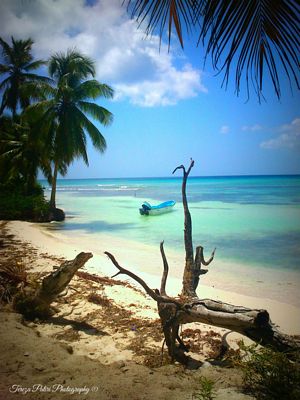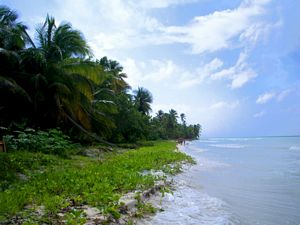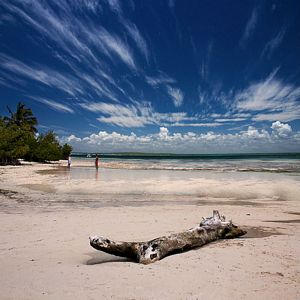
- Get to Know
- About Dominican Republic
- What to see
- What to do
- Hotels
- Santo Domingo
- Boca Chica
- South coast
- Bani
- Azua de Compostela
- Barahona
- Pedernales
- Inland Region
- Santiago de los caballeros
- Jarabacoa
- Concepción de la Vega
- Constanza
- San Francisco de Macorís
- North Coast
- MonteCristi
- Puerto Plata
- S. F. de Puerto Plata
- Sosúa
- Cabarete
- Nagua
More Offers on:Touristic Information:- Dominican Republic
- Santo Domingo
- San Pedro de Macorís
- Juan Dolio
- La Romana
- Higüey
- Punta Cana
- Playa Bávaro
- Samaná
- Hato Mayor
- Bani
- Azua
- San Cristóbal
- Barahona
- Pedernales
- Bahoruco
- San Juan de la Maguana
- Independencia
- Montecristi
- Puerto Plata
- Sosúa
- Cabarete
- Río San Juan
- Nagua
- Santiago
- Jarabacoa
- La Vega
- Constanza
- Cotuí
- Bonao
Basic Information:- Prepare your travel
- How to get
- Means of Transport
- Gastronomy
- What to See
- Beaches
- Museums
- Natural Parks
- Zoos & Aquariums
- What to do
Others:Parque Nacional del Este
Explore in the Parque Nacional del Este the attractive nature of the area and discover the Taíno art ruins in Dominican Republic.
Discover the East National park (Parque Nacional del Este) located to the southeast of Dominican Republic which constitutes one of the most beautiful parts of the country.
The park houses more than 500 species of flowers and 300 of birds, with large areas on the beaches where it is possible to dive on the coral reefs full of manatees, dolphins and other numerous sea creatures.
It has a surface of 430 m2, and its average temperature all the year is 26o with 1300 mm of year rainfalls. It has three different weather areas (tropical rainforest, Subtropical dry forest and transition woodlands) which made it a wonderful and attractive place with lush vegetation and mysterious caverns adorned with symbols of the indigenous gods.
In the area of Guaraguao, located almost in the coast, there are several ancient paintings on rock draw by a population who lived here more than 500 years ago. In the rest of the caves there are lots of structures created by stalactites and stalagmites.
Another amusement is to observe mammals, being one of the best places to find the natives ones in the island. Among the numerous species inhabiting the area, those which stand out are the Dominican solenodon and the Hutia, both threatened with extinction. The solenodon is the oldest mammal in the Antilles Islands and the only representative of the insectivorous in the region. It is small, large and looks like a rodent, it is found in the branches of dry trees. Nowadays, there are only two species, one in Cuba and the other one in here.
Regarding the flora, the most numerous trees species in the protected area of the park are, mostly Guáyiga, Copey, Copperwood, Bayahonda, Mahogany, Grigri, Bulnesia arborea, Coconut tree and beach grape. Don’t miss the chance to visit the Padre Nuestro Ecological and Archeological Trail located in the East National Park.
It is part of the park of Saona Island, covering 110 Km2, and located at the south. It has 1200 inhabitants, whose livelihood is based relies on fishing and tourism, as well as kilometers of white sand and crystalline waters beaches.
Historically, this was an important island for the natives, being the place where they sheltered, who were commanded by the cacique Cotubamaná when they lost the Hispaniola against the troops of Juan de Esquivel. Natives took advantage of the rocky nature of the island and sheltered on its numerous grottoes and caverns, preserved and difficult to access. Later, pirates used them as their operation center. And, once in the 20th century, the North American archaeologist Teodore de Booy searched on them and found numerous relics left by the first indigenous.
The place from where tourists normally leave to visit the park and often spend the night is La Romana. Other interesting places located next to the park are Catalina Island, with the Naufragio del Capitán Kidd Shipwreck, and the beaches Bayahibe and Dominicus, where the Dominicus Casino is open every night. If you are interested in art, Los Altos de Chavón is also very close.
More information:
To reach Saona, you can negotiate with an agency or directly with the boatmen on Bayahibe Beach. They are usually around 1300 RD$ and normally leave early in the morning, returning around 4:00pm.
Recommended Excursions:
Carte Interactive:
La Romana
What to see:
- Iglesia Santa Rosa de Lima Church
- Central Park
- Altos de Chavón
- Casa de Campo Marina
- Padre Nuestro Ecological and Archeological Trail
- Dominicus Casino
- Puente Cave
- Tabacalera La Matilde Tour
- Parque Nacional del Este
Beaches:
- Saona Island
- Playa Minitas Beach
- Playa Bayahibe Beach
- Dominicus Beach
- Palmilla Beach
- Catalina Island
- Catalinita Island
What to do:
Hotels
Book now your Hotel or Apartment:
Flight Offers:
Compare flight offers and book in advance to save some money.
Car Rental
Find the largest offer in car rental for your holidays:
Copyright www.VisitDominicanRepublic.org © - All rights reserved.






